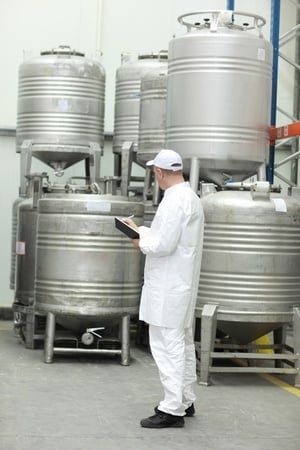 Even though the Centers for Disease Control and Prevention (CDC) reported in 2010 that, overall, illness from six main food-borne pathogens was down 23 percent, it also confirmed that salmonella still poses a serious danger to American diners. That wicked little bacteria alone is credited with causing about 1.2 million illnesses each year in the U.S. and is one of the reasons that consumers keep an eye trained on food safety news websites like Foodsafety.gov, carefully noting all of the major food recalls that seem to come out every week.
Even though the Centers for Disease Control and Prevention (CDC) reported in 2010 that, overall, illness from six main food-borne pathogens was down 23 percent, it also confirmed that salmonella still poses a serious danger to American diners. That wicked little bacteria alone is credited with causing about 1.2 million illnesses each year in the U.S. and is one of the reasons that consumers keep an eye trained on food safety news websites like Foodsafety.gov, carefully noting all of the major food recalls that seem to come out every week.
With wellness and safety concerns in the spotlight, it's essential for the food service industry to improve its food safety game. Taking basic precautions is no longer enough. Food handling during preparation must include steps that virtually eliminate vegetative pathogens like salmonella and botulism.
The good news is that technology makes that possible.
Prepping food with a vacuum packaging system, for example, helps to eliminate the conditions that allow pathogens to thrive, meaning consumers can enjoy meals free from concerns about the safety of what they're eating.
Eliminate Oxygen
Vacuum packaging food, also known as Reduced Oxygen Packaging (ROP), is an effective method for preventing bacterial growth according to the U.S. Food and Drug Administration (FDA). Additionally, when vacuum packaging is used as part of the process for preparing food for storage and later cooking, it facilitates comprehensive heat transfer which permeates to the center of raw food to ensure thorough cooking.
Heating food to the point that the internal temperature is a "safe" one isn't new in food safety news, and it's one of the FDA's top recommendations for preventing food borne illness.
Before Packaging
Vacuum packaging is only effective for food safety if the food is prepared properly prior to packaging. Only fresh ingredients should be used as vacuum-sealing won't reverse the process once food has begun to spoil. Food must be kept refrigerated until you're ready to package it, and bags cannot be packed to the brim. To insure a proper seal, the contents of a bag must be in a single layer of only 2 inches or less in thickness. This is especially important when working with meat.
Pasteurization
While pasteurization is a process that is typically associated with dairy products, it is a safety measure that is beneficial when applied to any type of perishable food. When used in conjunction with a vacuum packaging system, such as what occurs in the sous vide process, it enhances the safety of the food and safeguards the health of the consumer.
A few aspects to remember when putting vacuum packaged food through the pasteurization process are:
- Only food-grade plastic packaging that is heat-safe to temperatures above 130 degrees Fahrenheit can be used.
- All air must be removed from the package during the vacuum process to create an effective anaerobic environment and to ensure that the bag will remain submerged during pasteurization
- Vacuum packaging and pasteurization are more effective for full cuts of meat. It takes an advanced system to ensure even distribution of heat with ground, chopped or perforated portions of meat.
- You need a dedicated set-up if you're cooking multiple portions. A cooking vessel must be large enough so that the packages don't crowd each other; packages that are touching won't experience sufficient, thorough heat transfer.
- Pasteurization starts at around 130 degrees Fahrenheit, so the center temperature of the food must register at least that temperature in order to be considered safe
As food safety news continues to concern American consumers, cooking methods like sous vide give everyone in the food service game-- from restaurants to suppliers-- an advantage. It's an investment well worth the time and capital when weighed against the dangers of food-borne illness.







